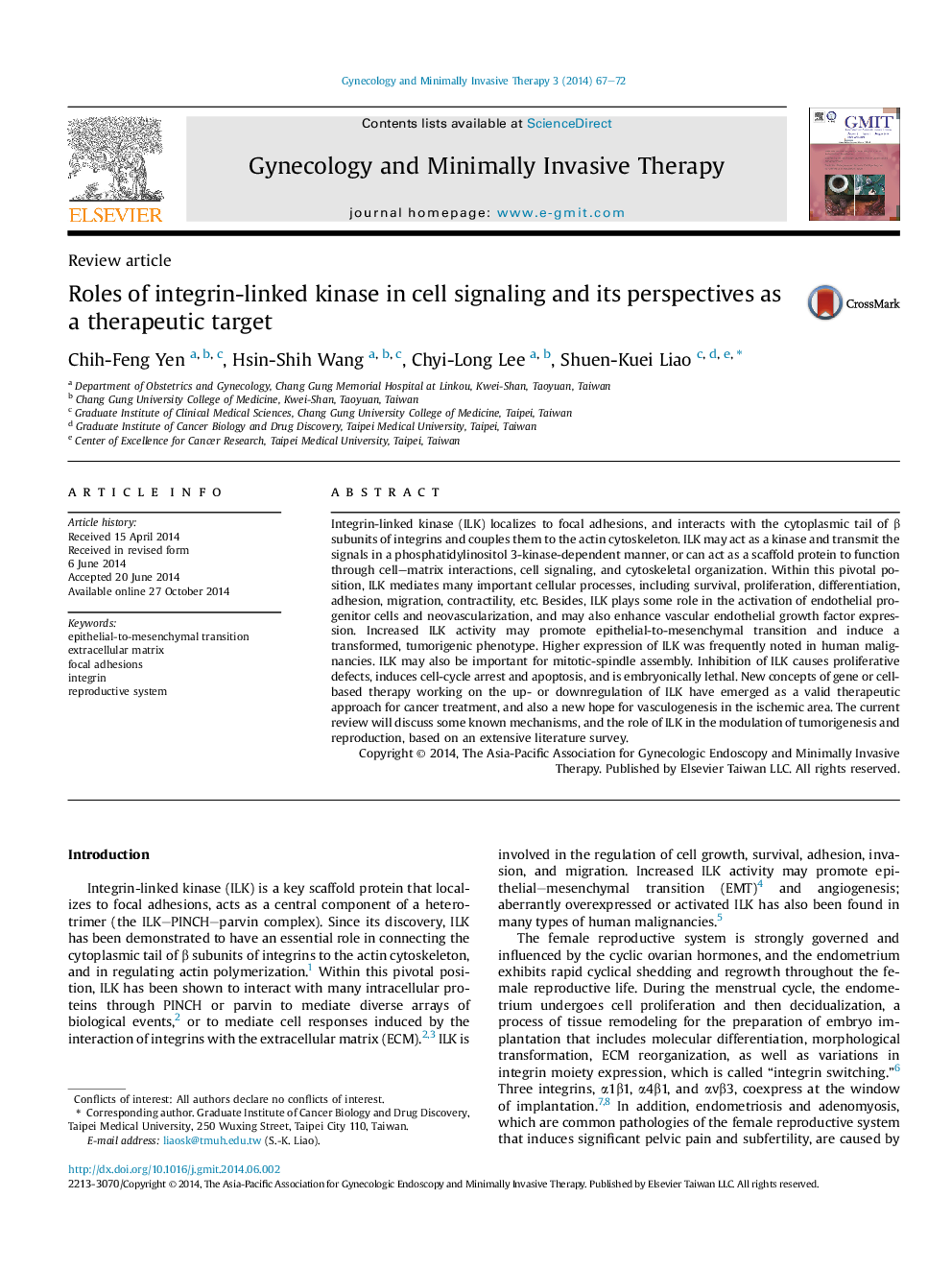| کد مقاله | کد نشریه | سال انتشار | مقاله انگلیسی | نسخه تمام متن |
|---|---|---|---|---|
| 3951340 | 1254857 | 2014 | 6 صفحه PDF | دانلود رایگان |
Integrin-linked kinase (ILK) localizes to focal adhesions, and interacts with the cytoplasmic tail of β subunits of integrins and couples them to the actin cytoskeleton. ILK may act as a kinase and transmit the signals in a phosphatidylinositol 3-kinase-dependent manner, or can act as a scaffold protein to function through cell–matrix interactions, cell signaling, and cytoskeletal organization. Within this pivotal position, ILK mediates many important cellular processes, including survival, proliferation, differentiation, adhesion, migration, contractility, etc. Besides, ILK plays some role in the activation of endothelial progenitor cells and neovascularization, and may also enhance vascular endothelial growth factor expression. Increased ILK activity may promote epithelial-to-mesenchymal transition and induce a transformed, tumorigenic phenotype. Higher expression of ILK was frequently noted in human malignancies. ILK may also be important for mitotic-spindle assembly. Inhibition of ILK causes proliferative defects, induces cell-cycle arrest and apoptosis, and is embryonically lethal. New concepts of gene or cell-based therapy working on the up- or downregulation of ILK have emerged as a valid therapeutic approach for cancer treatment, and also a new hope for vasculogenesis in the ischemic area. The current review will discuss some known mechanisms, and the role of ILK in the modulation of tumorigenesis and reproduction, based on an extensive literature survey.
Journal: Gynecology and Minimally Invasive Therapy - Volume 3, Issue 3, August 2014, Pages 67–72
